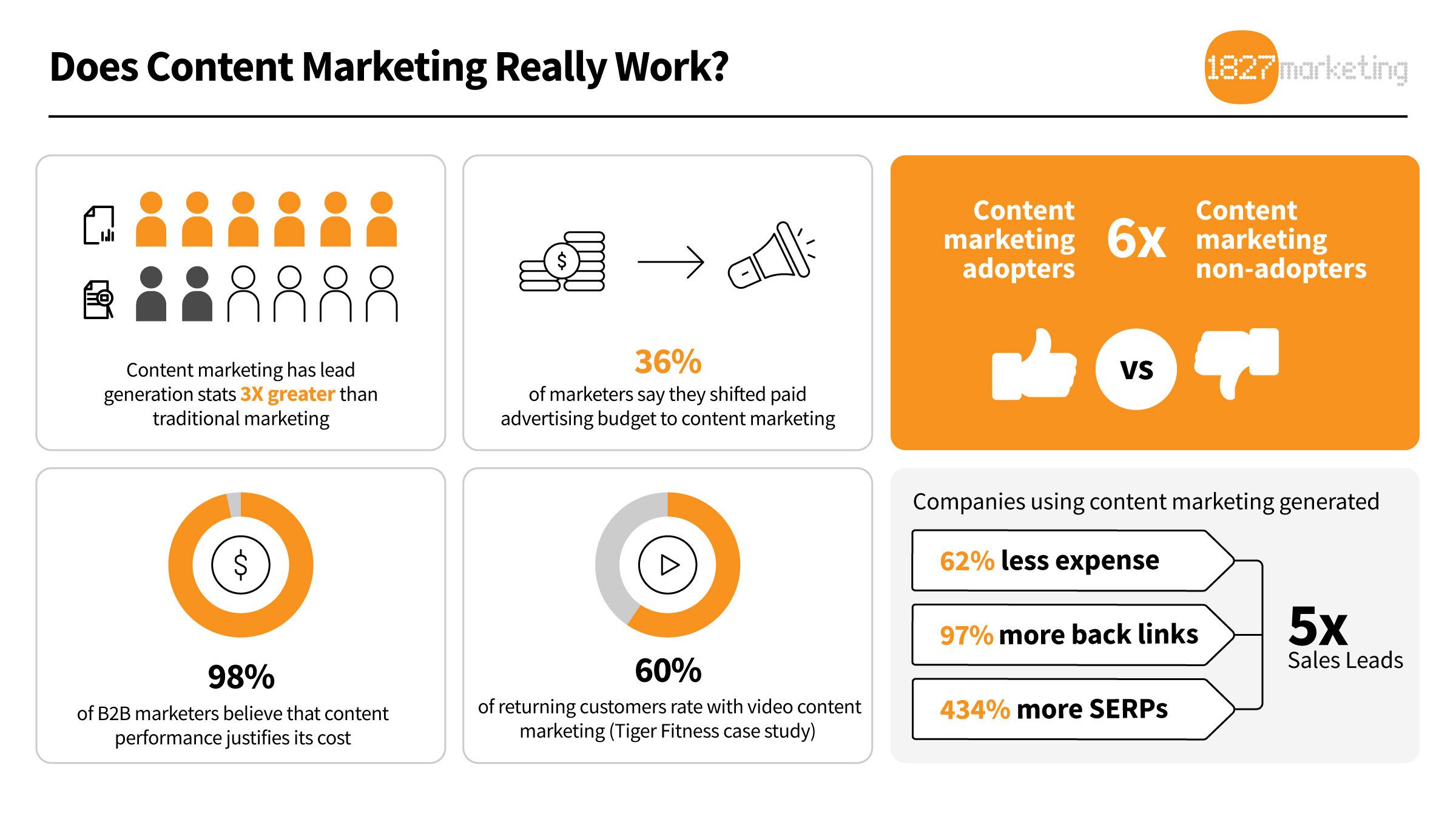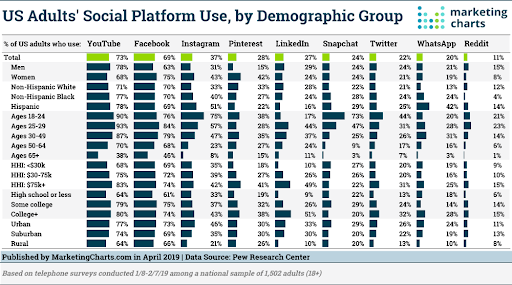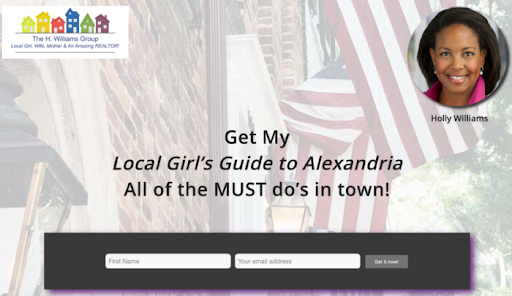
As the statistic above shows, content marketing can benefit both B2B and B2C industries by boosting lead generation and, eventually, bettering organic search results and the brand’s authority.
And since content marketing can provide results that could grab attention, sometimes brands use gated content to bring in more prospects organically.
But what exactly is gated content, and how can it improve a brand’s lead generation?
Gated Content: A Definition
Gated content is the type of content your prospects can acquire after subscribing to your email list, liking your social media page, or otherwise engaging with your brand.
Now, gated content might sound counterintuitive to some, but this is not the case when it comes to lead generation.
Usually, a prospect will come across your branded content and will land on one of your pages through various channels, whether they’re social media shares of your blog posts or an organic search. Increase your potential by employing branding strategies which will make you recognizable in the long run, to find some good examples check the work of the digital branding agency Digital Silk.
At this stage, they’ll probably come across an incentive of sorts, a lead magnet in the form of content, like so:
Gated content is, more or less, an incentive that can work wonders for attracting leads, as prospects see some value in giving you their email address or other pieces of information. Not to mention that it’s one of the most popular email list building techniques since gated content can give a small taste of what your overall email newsletter content is like.
Of course, gated content needs to be free, especially when used to build your list, grow your social media following, or boost your authority with valuable information. Paid content might be just as beneficial; however, it’s not something to utilize when trying to bring in interested leads in exchange for their email address or other pieces of information.
The Hows and Whens of Gated Content
As I mentioned before, gated content might sound counterintuitive in some cases. This is why marketers need to be very clear on their goals and KPIs before deciding to use this technique for lead generation.
The Type of Content You’re Providing
Gated content can vary in style, type, and of course, function. The main types of gated content that can generate leads are the following:
- Content upgrades to existing blog posts
- Whitepapers or e-books
- Demos or webinar content
So, the first thing to pinpoint would be the type of content you are going to provide. To determine this, you need to use your customer personas first and decide what type of content your ideal customer would be interested in, in the first place.
For example, if the leads you’re trying to attract, and your ideal customers are B2B customers, perhaps they’d be more interested in a whitepaper or perhaps content that is based on extensive research, like an e-book. On the other hand, if your ideal customer representation is a marketer, maybe they’d be more interested in a content upgrade or perhaps a checklist that will help them streamline their actions.
No matter their niche, prospects are always more than a little wary of giving up their information in exchange for something. This means that they’ll look for the gated content online and see if there’s readily available somewhere else. So, you’ll need to make sure your gated content provides extra value because of the unique insights you can provide, especially if you’re considered an authority in your niche.
Alignment With Your Goals
Creating unique content is not always guaranteed to work in your favor, especially if you don’t know what you’re looking to achieve with it.
You may know what your ideal customer is looking for, but are you sure your content works for them and your goals as well? This is a question you could answer by looking into your marketing plan and making sure your gated content aligns with your goals.
If your goal is to create viral content to make your brand known quickly, for example, what you need to do is to invest in social media content, especially if you can attract your target audience with video marketing:

As you can see in the statistics above, gated content might be fantastic, but expanding your reach is quite important, especially if you’re just starting. In that case, you will need to “meet” your audience on the platforms they frequent and use the appropriate mediums for your goals and aspirations, and align with the mediums your potential customers use.
Alignment With the Funnel
Content marketing is versatile enough to be incorporated in every stage of your marketing funnel. This means that creating gated content should be aligned with the place of your prospects in that funnel as well.
Gated content that can be accessed on a landing page needs to differ from that provided as a content upgrade for a bottom-funnel blog post. Here’s what I mean:
This is a landing page from an industry that could seem like it doesn’t need landing pages, as future homeowners will organically find a realtor near them. However, you need some top-of-funnel content to go with your intentions.
In this case, the H. Williams Group provides value by creating a local guide to attract more leads through its real-estate landing page. This action will help them generate leads interested in Alexandria specifically, making it easier for the brand to build authority. Not to mention that they’re establishing themselves as experts in that specific area. That way, prospects interested in renting or buying in the city of Alexandria, VA, will know to refer to this firm before looking into the services of a competitor.
Even if your user is not actively looking for a solution but is only “looking around”, gated content is a fantastic way to establish your brand and keep them interested.
Ways to Promote Your Gated Content
Apart from making sure your gated content falls into the right hands, you need to remember that you can’t create gated content without having targeted messages that gently lure users into discovering your brand.
This is because Google won’t help users discover gated content organically, as it’s “hidden” and needs to be promoted differently.
You can always use different tactics that will boost traffic on the pages where your gated content is “hidden”. For example, you can promote a landing page or a form that requires information in exchange for your whitepaper or a link to your webinar through your social media posts.
If you’re engaging in video marketing, make sure to include a link to the form of your gated content in the description of your video and also promote it through your video’s script. The same goes for your blog posts and any webinars or whitepapers that could be relevant to your niche.
According to Forbes, “Those in the research phase of the customer journey will be more receptive to accessing your gated content if they have already found value organically“. Which is all the more reason to not shy away from distributing the pages where people can access your gated content through influencer marketing and link building. That way, users will stumble upon your content organically by engaging with the content of someone they already consider to be an authority.
The Takeaway
Gated content can work wonders for lead generation, especially if you’re looking to give your email list a boost and make a difference to your audience.
Gated content helps by providing extra value to your existing content and establishing your brand as an authority in your niche, especially if it’s combined with other mediums like social media marketing, perfect influencer marketing, and optimized, A/B tested email content.
Want to help contribute to future articles? Have data-backed and tactical advice to share? I’d love to hear from you!
We have over 60,000 monthly readers that would love to see it! Contact us and let's discuss your ideas!

